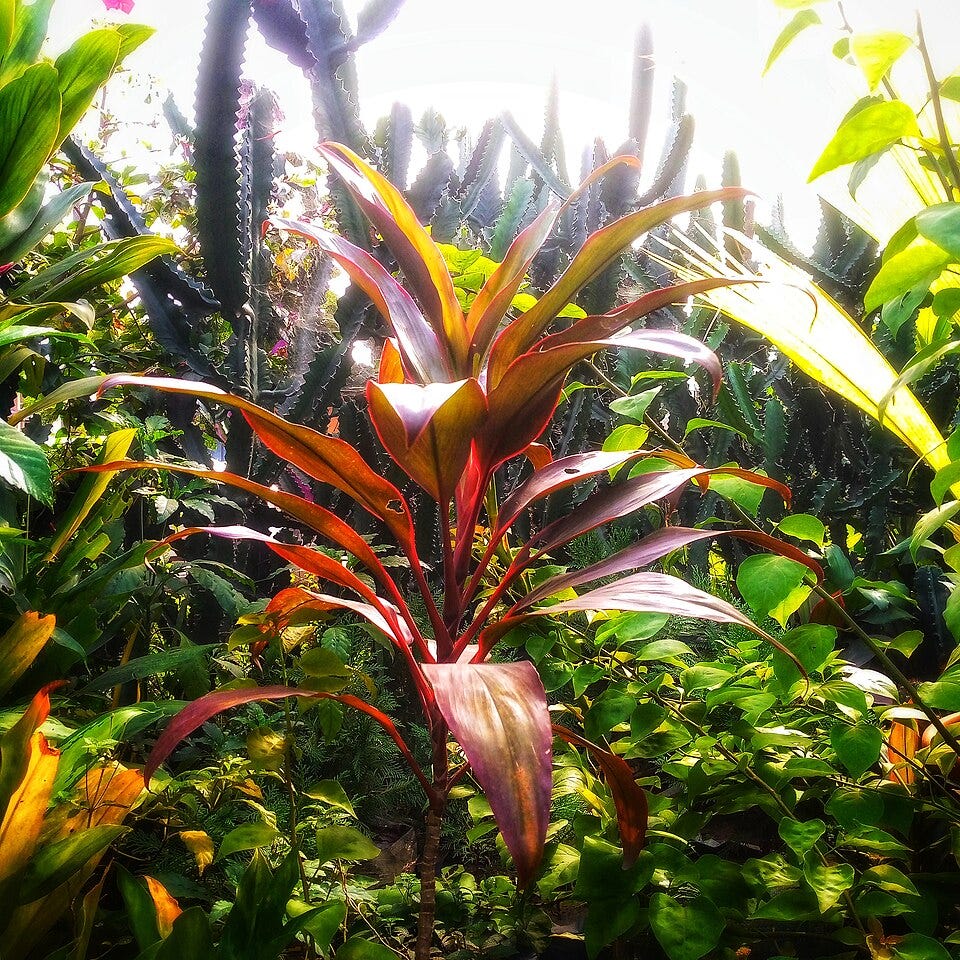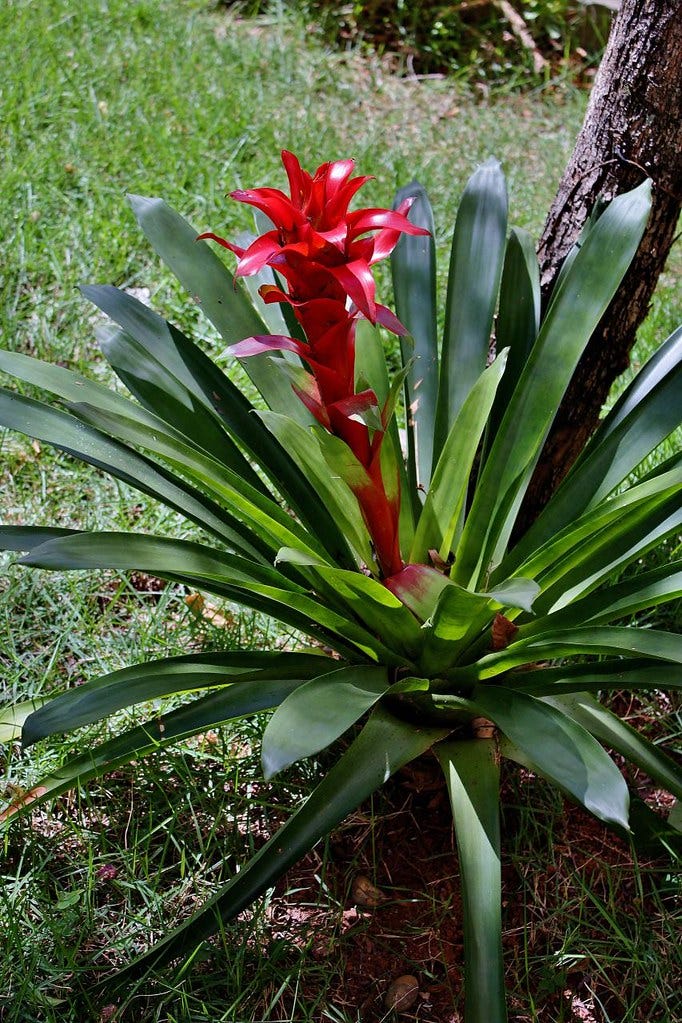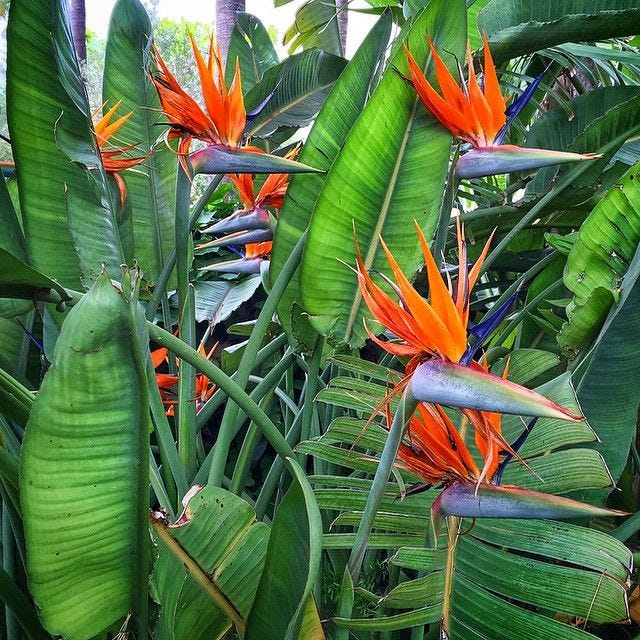ALSO KNOWN AS: kï, lau kï, lä‘ï (Hawaiian), cabbage palm, palm lily, Cordyline fruticosa, Good-Luck Plant, Hawaiian Good Luck Plant, Hawaiian Ti Plant, Hawiian Ti, kī
from a distance
Spiraled thick leaves are the traditional pāʻū or hula skirts
Sacred plants of forests, representing peace, prosperity and hula, the movement of all things
related to asparagus, so little red berries emerge after their white and purple flowers
Amitav Ghosh, in his book The Great Derangement, describes that we need more than language to understand climate change. Simple words won’t evoke the immensity. Implicitly we understand languages beyond words. We can learn to interpret wind, or the greeting of our hand to a dog, or the gentle way we move earth to plant a seed. Through the adept work, Ghosh ties in the very creation of the concept of a novel born from western thought, he brings forth the value of storytelling that goes beyond human centrism. We must know through imagery and gesture. Imagine, through the pattern of ants, curves of bird wings, color of grass, and texture of sun, that the world is thinking through us.
A Sense of Place
The ti leaf may have been one such modality through which communication occurred between people and land, people and time, spirit, and each other. The plant and its influence is woven into the vast archipelagos of Polynesia, Micronesia, Hawai’i, Melanesia, and The Philippines. The ti plant also spans mainlands from Bangladesh to Northern Australia - as an ornamental houseplant, it is the most economically influential in India.
They are companions of the forest and lowlands, in rich arable soil. In forests they are protected from salt spray and heavy winds off the shore that disturb their growth.
The structure of the plant opens up like a fountain of leaves and spiralling down.
It has a heft woody stalk so it can grow up to 15 feet, as a shrub or small tree it stretches out three to eight feet wide with its long leaf berth. The canoe shaped leaves shine on the upper sides. They can be lanced with shades of red that are lighter or darker depending on accessibility to light and genetics. The leaves end in grooved petoles, which are the ligament which connects a leaf to a branch. As the plant ages the leaves yellow and fall off, so like palm trees, there are scars along their stem.
There in the humid understory of the south and east Asian forests, it prefers tropical weather, but it’s strong and can sustain in 30 degree temperatures. It will even grow at 2000 feet, so used to island mountain ranges.
The 24 species of ti plant grow in similar regions in the southern hemisphere and Southeastern Asia - except for one in South America.
The name “cabbage” usually follows this plant, emerging from that layered quality that the leaves evoke. There is something so exciting about layers.
The flowers come off of a broad red stem at the center of the plant, like a wand reaching up and breaking out at the top. This is called a panicle. It bursts with the energy of a sparkler with white to lavender flowers that break out sessile - right on the stalk, without stems - in showy bisexual flowers. As part of the Asparagaceae or asparagus family, you can see the emblematic small red berries with many seeds in each.
The ti plant makes an impact. When they bloom, they smell softly sweet. They are able to make electric coloring on their foliage. You have seen this plant. You have walked by it because it is one of those broadly labeled tropical plants that are considered “easy” because it’s difficult to overwater them, and they don’t mind being in shade. But the value of this plant goes beyond its amiable nature. In some places ti plant is a foundational thread to culture.
It literally carries stories - whether it be through the food it wraps, the homes it thatches, the bodies it cares for, or the figures it contains.
Everything I am writing about this plant is only a small statement to cover its vital importance to many peoples throughout the span of Islands in Southeast Asia. I bow to the plurality of cultures there to which this plant is a vital part, understanding I will never truly know them. This plant is entwined with the lives of the peoples there, a community of which I am not a part - just like so many of these plants. My intention is to bring you, reader, along on my journey, and to engender a seed of awe that this plant, and so many plants, are due, with an ultimate goal to encourage the indigenous sovereignty that has cultivated and uplifted these plants in their ecosystems and the deep knowledge of the natural world these ancient cultures protect.
So, the name of the ti plant alludes to its valuable import. Called “kī”, they have a cognate in Proto-Austronesian *kilala meaning ‘to know’. The divinatory powers are only a small aspect of the medicinal and food uses this plant is for indigenous peoples wherever it grows.
In the car I learned to drive in, we had a hula dancer on our dashboard. I didn’t know anything about Hawaii. I had never been - and, even then, I knew this hula dancer was an exoticised version of a culture far away. She was one of many culturally appropriated symbols, for white tourists to continue using the island, while the US government creates a relationship of dependency and extraction there. She was never meant to be understood. But there she stood on our car dashboard. I didn’t know that the lime green skirt - or pāʻū in Hawaiian or Sisi Lou Si in Tongan (and so on) - was traditionally a ti plant, that she would not be holding a ukulele, but emoting the movement of nature in her hands, singing with so many tones the history of her people. With no written language, dances were the stories of the Hawaiian people. In addition to adorning the hula dancers, the leaves form cordage. They are the traditional fiber and decoration of the Hawaiian and Polynesian leis.
From 1830 to 1875 hula was forbidden for Hawaiian people - forcing the practice to move in the shadows. Even in the late 1800’s when hula was officially allowed to return the songs were forced to fit a more western, Christian melody and the full range of gestures and sounds of the pagan beliefs that were much of the stories themselves were lost. Even now while there are many reclaiming the value of hula through to the US annexation and into the present day statehood, hula still struggles to disengage from exoticism. In the 1970s with the Civil Rights movement on the mainland, Hawai’i also benefited from the upheavals, by establishing Hawaiian as an official language and allowing people to become more free in using Hawaiian names and traditions in what is now known as the Hawaiian Renaissance. The devastating loss reverberates, which signifies losing touch with collective stories.
Plants for Peace
Stories about ti abound. In New Zealand the spirits of two women who became ti plant, will follow travelers through the land. This plant stewards the land, moving with people silently as if to care for them too.
The ti stalk was a sign of surrender. In Hawaiian mythology it is associated with Lono, the god of peace and agriculture. A symbol of peace after conflict, ti’s presence Lono spread a healing salve over people. Memory plays a role again here, the ti plant skirts were worn to honor people who had died in battle.
In many places they are believed to exist in this world and the material world.
While fundamentally associated with movement, ti is a plant to create ‘space’, to sanctify or bless it, or to separate one place from another. It is a border and a portal. Luck is abundant when the ti plant is near, warding away evil spirits. In the water it negotiates dangers. Suspicion has it that when something sinister is in the water - a shark, perhaps, or evil spirit - it will sink. If the water is safe it will float.
In the Philippines it is used by female shamans, babaylan, to conduct rituals as the plant proceeds to host spirits, and communicate with them, there on the borders between one place and another, between one world and another.
The latin name comes from the Greek word, kordyle, meaning “club.” The club was not the wandlike stalk at the top, but the root. Ti can be propagated from its stalks and rhizomes. These rhizomes are what give the plant its latin name. The pearly roots are thick, they keep the plant moving through the forest, as it brings up vegetative clones. These delectable roots are 20% sugar and can be eaten as candy and are used to sweeten the intus, or the traditional Filipino liquor. They are so sweet that studies suggest they could be a primary source for fructose in the world.
The leaves are used to repel rain, wrap food, and line ovens and fermentation pits. They are eaten as young shoots. When massaged into the skin or made into a poultice, the leaves extract an acid and anti-inflammatory that lowers the body temperature. They have antibacterial, antifungal, antiparasitic, and antioxidant properties. Among the medical uses for the plant, the flowers can treat asthma and protect against infection. The green plant can be used as a green dye, as is traditional to The Dayak, and as body paint for the Mendi and Sulka people. Despite it being a medicinal plant, untreated, it has saponins - which can be used as soap. And, besides the root, eating an adult plant raw can cause poisoning. Picked at the right time and for the right purpose, the plant is useful in myriad ways.
Polynesians believed for - perhaps thousands of years - that eating the ti plant was taboo, the plant located sacred places, and its presence required deep respect. The discernment of when and how a plant was harvested reflects its occasional poisonous tendency.
It is possible taboo could be lifted by the sacred act of firewalking or umi ti practiced in Fiji, Tahiti, Bequa and more. Either way, ti is instrumental in this cleansing ritual. Here the leaf is valuable in transmuting human experience, ferrying the fire walker into another state of being.
The ti plant is a translator through which people connect with the world. My wobbly dancer, adhered to the dashboard is a replica of a kind of colonialism that erases the individual, taking the importance of the ti leaves away from the story. And yet there she was. I wouldn’t buy her at a store now. But maybe there was something in her - the movement stays with me even now. I remember how special she was to me, as I learned how to drive - she oversaw my freedom and an important threshold in my life. The movement, of course, is located right there in the hips, which makes those long leaves move, generating the deep flow of life. I thought the skirts were grass, but they are leaves, long thick leaves that hold in them so many aspects of life. It is said, in Hawaiian culture, that one is to think about Laka when they dance. She is the goddess of the forest, and thus the goddess of reproduction. The forest gives and gives, creates and creates. The dance, for the Hawaiian people, is a form of storytelling. Emanating from the forest, the movement is the story.
myth for ti plant
Not to be confused with Bromeliad Guzmania
Or bird of paradise. They just don’t have those flaming flowers or the central stems that ti plant has.
Forager Friendly?
Yes, if you come by it, harvest honorably.
Sources:
https://plants.ces.ncsu.edu/plants/cordyline-fruticosa/
https://www.missouribotanicalgarden.org/PlantFinder/PlantFinderDetails.aspx?taxonid=282057
https://sites.tufts.edu/redefiningmodernityatlilly/hawaii/
https://www.punaohanaflowershawaii.com/ti-leaf-plant-hawaiian-uses/
https://en.m.wikipedia.org/wiki/Cordyline_fruticosa
https://www.manoaheritagecenter.org/moolelo/polynesian-introduction-plants/ki-ti/
https://en.wikipedia.org/wiki/Laka
https://www.ctahr.hawaii.edu/oc/freepubs/pdf/of-33.pdf
https://www.eattheweeds.com/cordyline-fruticosa-food-foliage-booze-2/#google_vignette
https://www.nationalgeographic.com/history/article/the-surprising-history-of-hawaiis-hula-tradition
https://www.facebook.com/groups/271521942901159/posts/9490821900971071/
https://pmc.ncbi.nlm.nih.gov/articles/PMC10741932/
https://ntbgfellows.wordpress.com/cultural-knowledge/
how is the ti plant connected to the firewalking ritual
https://en.m.wikipedia.org/wiki/Hula
https://hal.science/hal-01723919/file/2018_Oceania.pdf
https://guides.library.manoa.hawaii.edu/c.php?g=105252&p=687126
https://sites.tufts.edu/redefiningmodernityatlilly/hawaii/

If you enjoy What’s That Plant?! throw me a dollar or two to my small fountain fund, or consider becoming a paid subscriber! Thank you, as always, to my paid subscribers.
Scrapbook for ti plant…
Keep reading with a 7-day free trial
Subscribe to What's That Plant?! to keep reading this post and get 7 days of free access to the full post archives.






